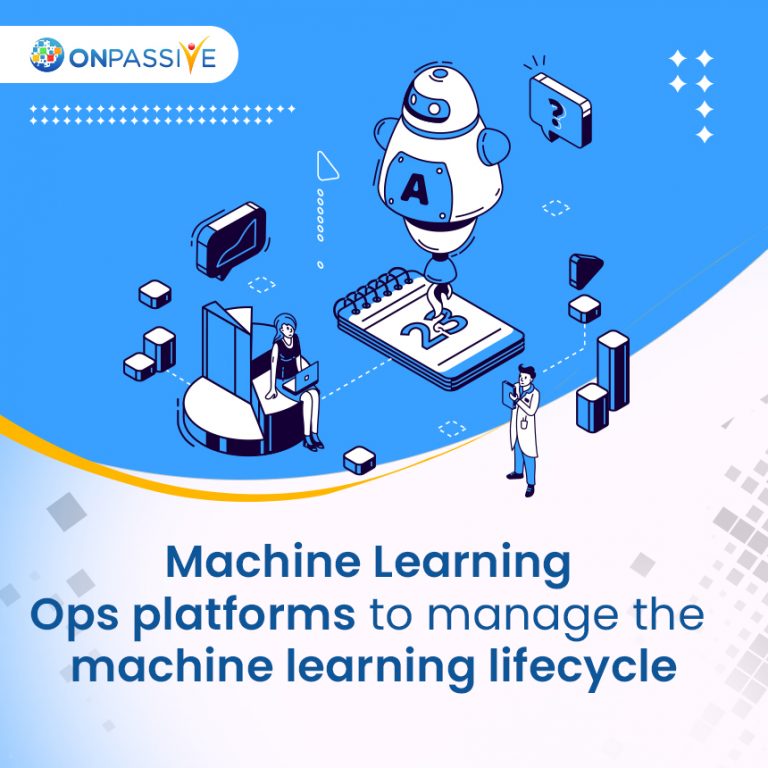
A successful machine learning project is model developments and deployments.
Machine Learning is a complete lifecycle. It consists of a complex set of steps with varied skills required to achieve actionable outcomes and deliver business values.
The level of complexity involved in ML lifecycle is part of the reason why acceptable practices and fully integrated tools at infancy. Five Facts About Machine Learning That Every Business Leader Must Know
Productionizing AI using MLOps
Machine Learning Ops is the process of operationalizing data science and machine learning solutions using code and best practices promoting efficiency, speed, and robustness.
Machine Learning Ops is about producing better ML models faster that have a right culture which is data-driven with applied DevOps practices with ML systems involving significant collaboration between data scientists, data and cloud engineers create among executives support and iterative feedback with stakeholder.
The adoption of such practices is indispensable for putting reliable machine learning projects into production.
Business Incentive
Companies apply core practices for using AI have both higher revenue increases, and higher cost decreases compared to other AI-adopting organizations. The formers are high achievers that leverage AI to drive value across the organization and mitigate risks that are associated with technology, and train their workers to achieve AI solutions at a grander scale.
It emphasizes the potential value that can be gained from machine learning when implemented and applied.
These tools allow user putting core MLOps methodologies into practice.
Machine Learning Lifecycle
ML lifecycle designs account for all steps from cloud architecture through to model development and deployment to stakeholder communication and upskilling. The high-level elements of a model are detailed underneath.
Steps for Data Science Lifecycle:
Step-1: Start
Step-2: Business Discussion
Step-3: Data Ingestion
Step-4: Exploratory Analysis
Step-5: Model Development
Step-6: Expose Insights
Step-7: Business Discussion
Step-8: Model Deployment
Step-9: Model Deployment- Cloud Design-Data Lake-Data Ingestion.
Cloud Architecture
ML projects not based on pure data science. Data and Cloud Computing are becoming increasingly important for managing complete Machine Learning.
Most cloud platforms these days provide their data science tools for development purposes.
It is so important to remember that Machine Learning code is only a tiny fraction of full lifecycle as a series of tasks designed in a well-structured manner, i.e., setting up a serving infrastructure, data collection, data auditing, model monitoring.
Infrastructure as a code is the basis of reproducible Machine Learning environments through peer-reviewed, secure pipelines. Model training and testing should carry out with a mindset of Continuous Integration and Continuous Development.
Security needs to built-in every part of a pipeline, both the data and code format.
The data scientist is responsible for developing a Machine Learning model, delivering analytic insights, data/cloud engineers that better equipped in setting up a Machine Learning pipeline ensuring continuous deployment of a project.
Data Ingestion and Data Cleaning
This step combines with data engineering and data science knowledge, assuring quality control, security, and integrity of data input. Data cleaning and transformation involves various steps depending on the project.
These will be:
- Dealing with Missing Values
- Duplicate Management
- Column Selection
- Filtering
- Text Cleaning
- Aggregation.
This step will have a significant impact on a model at the run time involved in a data processor.
Data Exploration and Model Developments
This phase involves different steps such as
- Data Exploration and Insight Creation
- Feature Engineering
- Training and Testing
- Model Optimization.
Data science projects benefited from the data exploration phase as it leads to a better understanding of underlying trends in the data.
It helps in pinpoint biases, and it fosters the creation of more accurate models by focusing on relevant data features.
Expose Insights To Stackholders
Most AI projects don’t go into production because expectations are not well communicated with the business, or due to the lack of skills necessary for maintaining these models in production. It highlights the importance of better and iterative communication between data teams and the business to help develop innovative AI strategies and solutions, and the need to upskill employees ordered for organizations to stay competitive.
Communication with stakeholders, setting clear expectations and upskilling employees are all critical elements in delivering business value through production ML solutions, while also helping organizations staying competitive in the era of digital disruptions. Best practices enabled by MLOps is the key to achieve these goals.
Visualization
This step involves the transformation of insights and ML predictions into a consumable format for end users.
Data Lakes and adoption of interactive dashboard visualizations over static reporting makes data access direct and efficient, representing necessary steps in the modern digital transformation process. Dashboards are tailored to customer needs, enabling marketing and sales operations through ML predictions.
Deploy
This model ready to make available to end-users and stakeholders and integrated with business processes for data-driven decision making. However, several steps remain including model deployment and validation, artefact creation, monitoring, performance engineering and operation.
After deployment, monitoring a model performance and data auditing ensures a smooth operation of ML lifecycle. The aim is being to create a self-healing environment where models can re-train when needed without human intervention.
Machine Learning Ops
Many companies spent years collecting data by leveraging full potential using AI.
Machine learning helps to deploy solutions that unlock previously untapped sources of revenue, save time and reduce the cost spent on resources by creating more efficient workflows, leveraging data analytics for decision making and creating a better customer experience.
Machine Learning Ops enables faster go-to-market times and reduces operational cost, allowing companies to be more agile and strategic in their decisions.
Conclusion
In conclusion, organizations that design their projects with MLOps concepts in mind will benefit from more reliable data platforms and secure environments recovering from a failure.
It makes it easier to focus on extracting insights and value that Machine Learning creates and positions its business to compete more effectively in the market.



Patricio Rivers
3 years ago
Anton Kittenberger
3 years ago